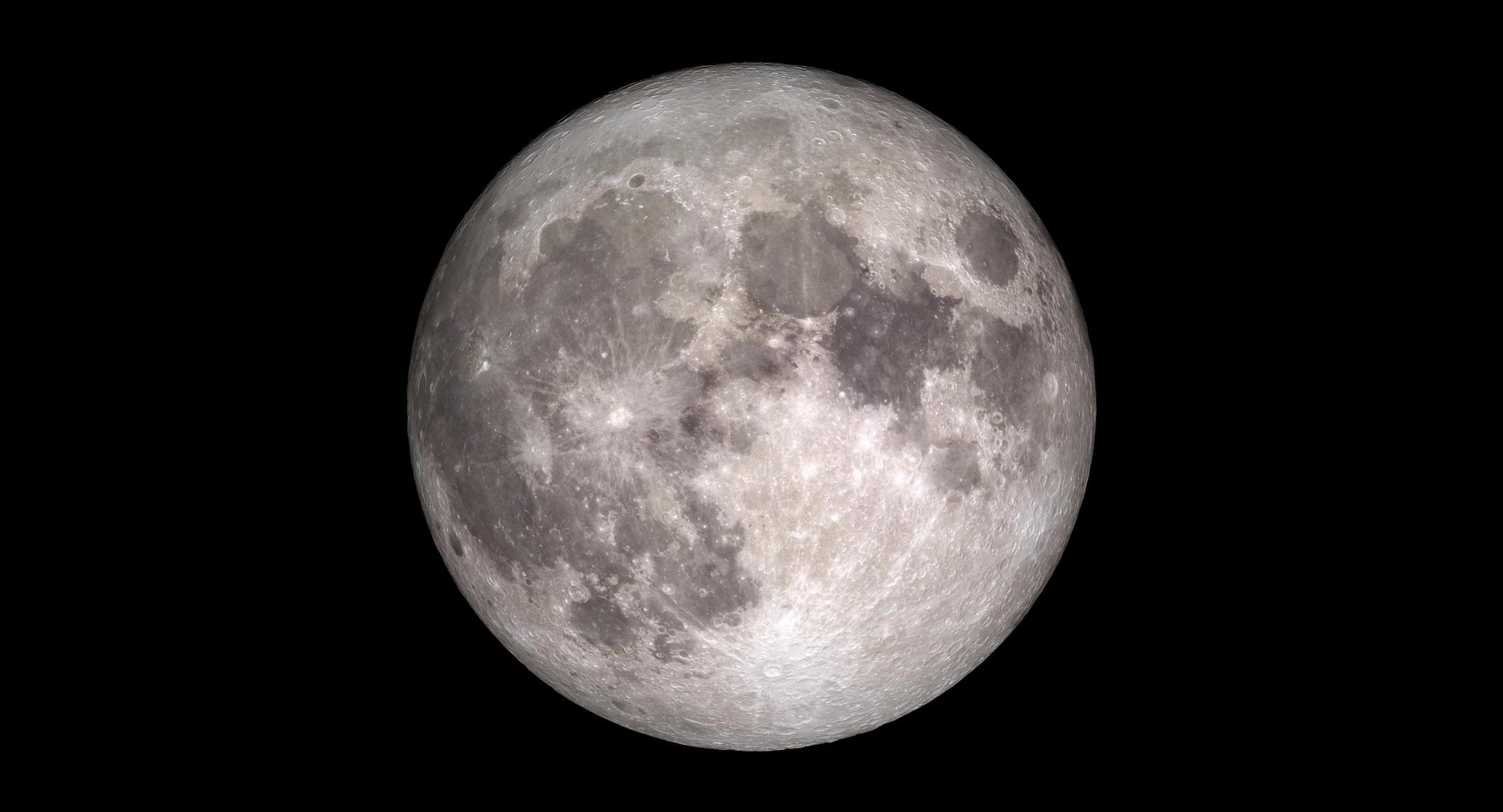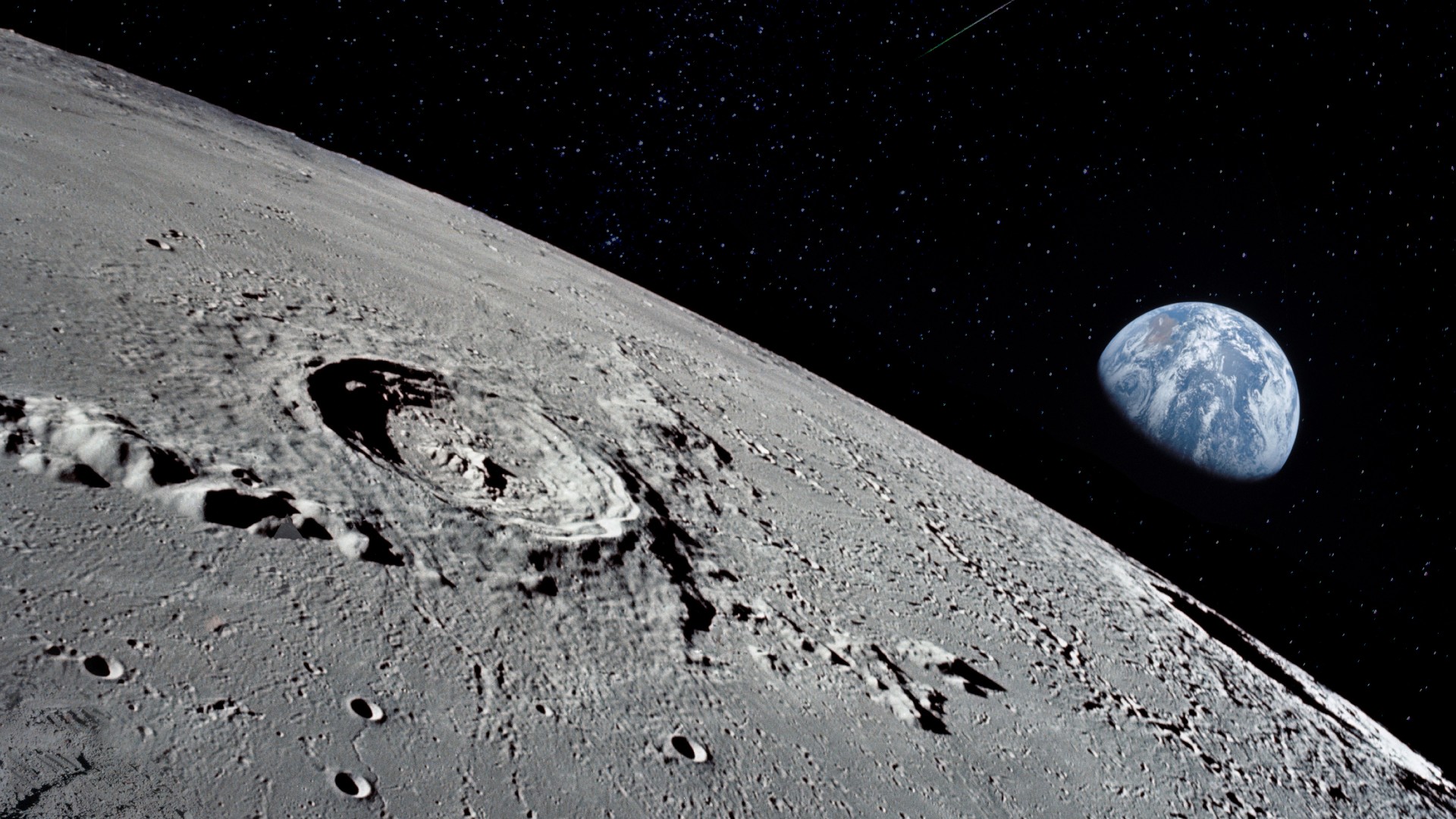Picture the night sky, where a silvery disk shines brightly, a cosmic companion that has inspired poets, scientists, and dreamers for millennia. The Moon, our natural satellite, is more than a beautiful ornament; it’s a celestial body shrouded in mysteries that continue to captivate humanity. In 2025, with events like the total lunar eclipse of March 13-14 still resonating and NASA’s Artemis program pushing toward lunar exploration, the Moon is in the spotlight. Why does it lack an atmosphere? What do its craters hide? And how does it shape life on Earth? At The Astronomy Insider, we unravel the Moon’s secrets, its science, its history, and how Americans can explore it in the night sky. Join us on this lunar journey!
What is the Moon?
The Moon is Earth’s natural satellite, with a diameter of about 3,474 km, making it the fifth-largest satellite in the Solar System. Formed roughly 4.5 billion years ago, likely from a colossal collision between Earth and a Mars-sized protoplanet (the Giant Impact hypothesis), the Moon is primarily composed of basaltic rocks and silicates. Its surface is marked by craters, maria (dark plains of solidified lava), and highlands, visible even with binoculars.
The Moon lacks a significant atmosphere, explaining the absence of weather, erosion, or life. Its gravity, about 1/6th of Earth’s, allows astronauts to “float” during missions, like those of the Apollo program in the 1970s. It orbits Earth at an average distance of 238,855 miles (384,400 km), completing a revolution in about 27.3 days (the sidereal period). Its synchronous rotation means we always see the same side (the near side).
Mysteries of the Moon That Intrigue Scientists
Despite being Earth’s closest celestial neighbor, the Moon holds enigmas that challenge science:
- Exact Origin:The Giant Impact hypothesis is widely accepted, but details, like the Moon’s chemical composition (similar to Earth’s crust but with less iron), spark debate. In 2025, analyses of lunar samples from China’s Chang’e missions are shedding new light on its formation.
- Far Side of the Moon:The far side, never visible from Earth, is more rugged and less covered by maria than the near side. The Chang’e 4 mission, which landed there in 2019, revealed geological differences, suggesting unique evolutionary processes. Searches for “far side of the Moon” are trending in 2025.
- Water on the Moon:In 2020, NASA confirmed molecular water in sunlit lunar regions, plus ice in permanently shadowed polar craters. In 2025, the Artemis program, led by NASA from the U.S., aims to explore these areas to support future lunar bases. Could water have arrived via comets? Might it harbor traces of ancient microbes?
- Moonquakes:Detected by Apollo mission seismometers, “moonquakes” stem from Earth’s tidal forces, lunar crust shrinkage, and meteoroid impacts. Their origins and implications for future lunar habitats are key research areas in 2025.
- Transient Lunar Phenomena (TLPs):Flashes of light on the Moon’s surface, known as TLPs, puzzle astronomers. They may result from gas releases or impacts, but their cause remains uncertain.
Want to explore more cosmic mysteries? See “Wandering Black Holes: What is AT2024tvd and Tidal Disruption Events?” on our blog!
The Moon’s Influence on Earth
The Moon plays a vital role on Earth:
- Tides: Its gravity drives ocean tides, shaping coastal ecosystems and navigation, from the Pacific shores of California to the Atlantic coast.
- Orbital Stability: The Moon stabilizes Earth’s axial tilt, ensuring predictable seasons across North America and beyond.
- Culture and Mythology: It has inspired legends, like the Greek goddess Selene, and modern events, like moonlit festivals. The total lunar eclipse of March 13-14, 2025, visible across the U.S., drew millions to gaze skyward, boosting searches for “lunar eclipse 2025.”
The Moon in 2025: Missions and Events for Americans
In 2025, the Moon is a focal point for U.S. science and culture:
- Total Lunar Eclipse (March 13-14): The Moon turned a striking red, known as a “Blood Moon,” visible from coast to coast in the U.S., from New York to California. This event sparked widespread interest, with viewing parties in cities like Denver and Tucson.
- Artemis Program: NASA’s Artemis 2 mission, set to orbit the Moon in late 2025 from Kennedy Space Center, Florida, will carry astronauts, paving the way for a 2026 lunar landing. This mission aims to establish a sustainable U.S.-led presence on the Moon, exciting Americans eager for space exploration.
- International Efforts: China’s Chang’e 6 mission is returning lunar samples, while India’s Chandrayaan-3 contributes data, complementing NASA’s work.
The next lunar event is the partial lunar eclipse on September 7-8, 2025, visible across the U.S., particularly clear in Western states like Nevada and Oregon. For the best experience, head to dark-sky locations like Great Smoky Mountains National Park (Tennessee/North Carolina) or Joshua Tree National Park (California), popular among U.S. stargazers. Check local astronomy clubs, such as the Astronomical Society of the Pacific, for eclipse viewing tips and events.
How to Observe the Moon with the Naked Eye
Observing the Moon is a simple way for Americans to connect with the cosmos. Tips:
- Naked Eye: The Moon is visible any clear night, with craters like Tycho standing out during the full phase (magnitude ~-12.7). Look for maria, like the Sea of Tranquility, visible from your backyard or a local park.
- Binoculars or Telescope: 7x50 binoculars or a small telescope reveal detailed craters and lunar peaks. Visit observatories like Griffith Observatory in Los Angeles or Lowell Observatory in Flagstaff, Arizona, for guided tours.
- Apps: Use Stellarium or Sky Tonight to identify lunar features. On May 23, 2025, the Moon pairs closely with Jupiter, creating a stunning sight visible nationwide, especially in clear Midwestern skies.
- Avoid Light Pollution: Choose dark-sky sites, such as Acadia National Park (Maine) or Grand Teton National Park (Wyoming), for optimal viewing. Check darksky.org for locations near you.
- Events: Follow NASA (@NASA) on Twitter/X for updates on lunar observations, or join events at planetariums like Hayden Planetarium in New York City, especially during the planetarium centennial on May 7, 2025.
Connect with the Cosmos
The Moon invites Americans to marvel at the universe and our role in it. You can engage:
- Track U.S. Events: Beyond the September eclipse, don’t miss the Venus-Jupiter conjunction on August 12, 2025, visible nationwide, perfect for stargazing in places like the Colorado Rockies.
- Join the Community: Attend events at U.S. planetariums or observatories, like Adler Planetarium in Chicago, during the 2025 planetarium centennial.
- Follow Artemis: Stay updated on NASA’s lunar missions via nasa.gov, fueling excitement for America’s return to the Moon.
- Share Your Passion: Have you gazed at the Moon or joined a stargazing event? Email us at contact@astronomyinsider.com! Subscribe for more cosmic content.
Sources
- NASA Science. “Earth’s Moon: Our Cosmic Companion.” Accessed May 29, 2025. https://science.nasa.gov/moon/
- ESA. “Exploring the Moon: Chang’e Missions.” 2024. https://www.esa.int/science-exploration/moon-missions
- “Total Lunar Eclipse Stuns in 2025.” Space.com, March 16, 2025.
- Post on X by @NASA, March 14, 2025.
- Post on X by@AstroSociety, May 25, 2025.







No comments:
Post a Comment